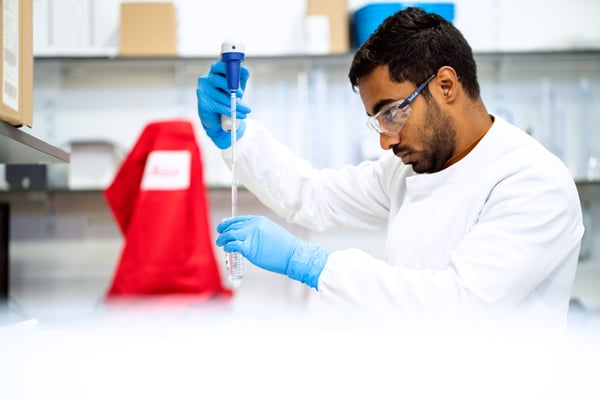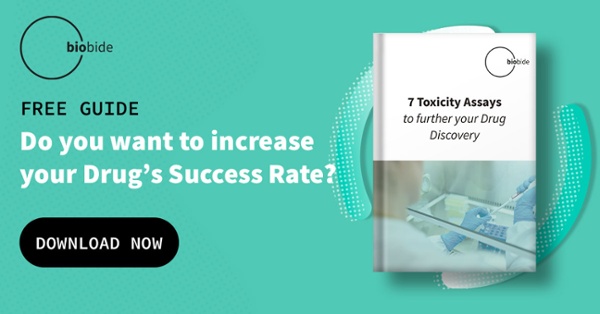The Drug Discovery process has a problem. Research, development, and FDA approval for new drugs can take on average up to 10 to 15 years, and it requires too high of an investment. So what can we do to speed up the process, while still obtaining good results?
In this article, we will explore strategies to speed up the drug discovery process in a cost-effective way.
What are Toxicity Screenings?
To accelerate the Drug Discovery process, researchers can use different assays. An assay is an investigative analysis to determine the toxicity or efficacy of one or more compounds.
There are different types of assays for different purposes. Efficacy assays help to test whether a product's claims can be substantiated. Ecotoxicity assays help determine the presence of hazardous substances in the ecosystem. There are also toxicity assays, which we are going to explore in more depth in this article. These types of toxicity screening assays help to determine the presence of toxic chemicals within a drug.
Thousands and even millions of drugs are screened and evaluated in the early R&D process. However, during this early phase, between 40 to 80% of the compounds are halted in development due to safety concerns. The occurrence of toxic events during the development of a drug is a massive waste of economic resources and time. Therefore, it is necessary to perform toxicity screenings in order to choose the best candidates for further progress in subsequent phases of research from in vitro to in vivo in animals (Preclinical Phase) and, later, in humans (Clinical Trials).
Zebrafish and Toxicity Screening
Mammals, which often include rodents, are key animal models used to precisely predict the potential toxic effects of a drug before entering into Phase I of human Clinical Trials. However, the number of these experimental studies must be limited due to ethical reasons and the high costs. To further funnel down the number of compounds that might enter into these relevant safety animal models, different innovative in vitro and in vivo techniques have been developed in early stages of Drug Discovery, including toxicity screening studies in alternative animal models, such as zebrafish.
These little striped fish combine genetic, physical, and economic factors that make them ideal for various types of preclinical research. They are cost-effective, easy to maintain, and their small size makes them ideal for research purposes. Furthermore, as vertebrates, zebrafish have many anatomical similarities with humans: they have eyes, heart, brain, pancreas, kidneys, and liver. Their genetic similarities and organ structures have made zebrafish research ideal for mimicking human responses during toxicological screenings.
7 Toxicity Screening Strategies
1. Neurotox Assay
This assay can help identify the harmful effects of chemicals on the nervous system. The nervous system is susceptible to toxic damage, and neurotoxicity is among the most frequent reasons for drug attrition. Neurotoxicity occurs when toxins affect the regular activity of the nervous system and ultimately damage nervous tissue. Toxicological screening can help identify these damaging elements within a compound. One of the benefits of using zebrafish as an animal model to detect neurotoxicity in screening assays is that their central nervous system development occurs within five days post-fertilization.
2. Cardiotox Assay
Cardiotoxicity, or toxicity to the heart, is a significant cause of failure for new drugs in mid to late-stage development. These facts mean toxicological screening is vital to ensure drugs are not damaging to the heart. Using the zebrafish screening platform provides an advantage here because of their rapid cardiovascular development and cost-effective model.
3. Acutetox Assay
Acute toxicity is a general term for any illness caused by single exposure to a toxic substance. The effects usually manifest themselves almost immediately after a single exposure, although there may be a latent period. An acute toxicity assay involves an analysis of the toxic effects of a single dose or multiple doses of a chemical.
4. Teratotox Assay
This assay can help evaluate the extent to which substances can interfere with normal development and cause adverse effects to offspring. In particular, zebrafish are a suitable animal model for teratogenic studies as their embryos are fertilized externally and develop rapidly, meaning researchers can observe the results of their studies from 2-4 hours post fertilization until 5 days post-fertilization when all organs should be developed.
5. Hepatotox Assay
The Hepatotox assay can help discover the risk of liver damage a particular substance may cause. Zebrafish are a popular animal model to use for this assay as they have functional similarities with humans and their transparency makes it much easier for hepatotoxicity screening assessments. These facts make them an ideal candidate to be used for the prediction of hepatotoxic agents. Also been able to use transgenic fish with fluorescence in the liver that allow visualizing it better for hepatomegaly or hepatic degradation.
6. Ototox Assay
Ototoxicity can result in damage to the ear, hearing loss, or balance disorders. With this toxicity screening assay, it is possible to test drugs for these potential toxic occurrences earlier in the Drug discovery process. Zebrafish are often used in these studies as their inner ear shares a similar structure and function to humans.
7. Immunotox Assay
Immunotoxicity refers to any adverse effect on the immune system's structure and function. This assay helps to identify immunotoxic substances. In particular, the zebrafish model, a practical model to breed and maintain, enables a time and cost-effective assessment of the potential immunotoxic effect of chemicals into the immune cells.
In summary, Drug Discovery and Development can be a time-consuming process until the final FDA approval. Toxicological screening can speed this up by detecting any toxic elements in the early Drug Development process. In this article, we have listed seven specific assays that can help identify these toxic substances.






